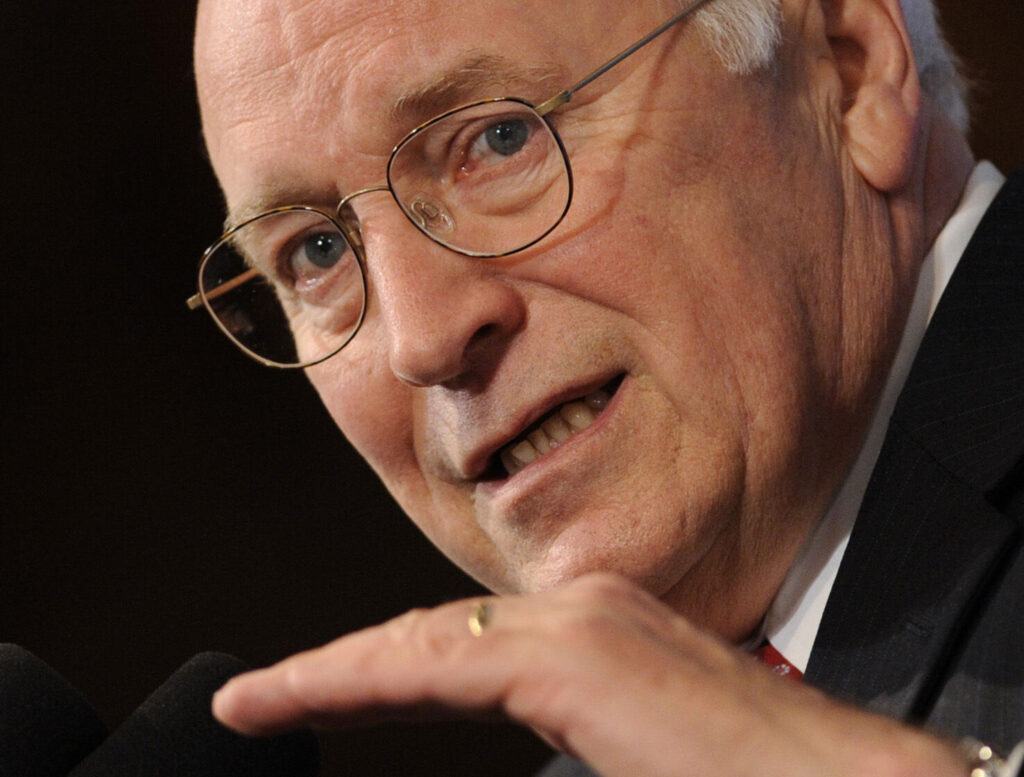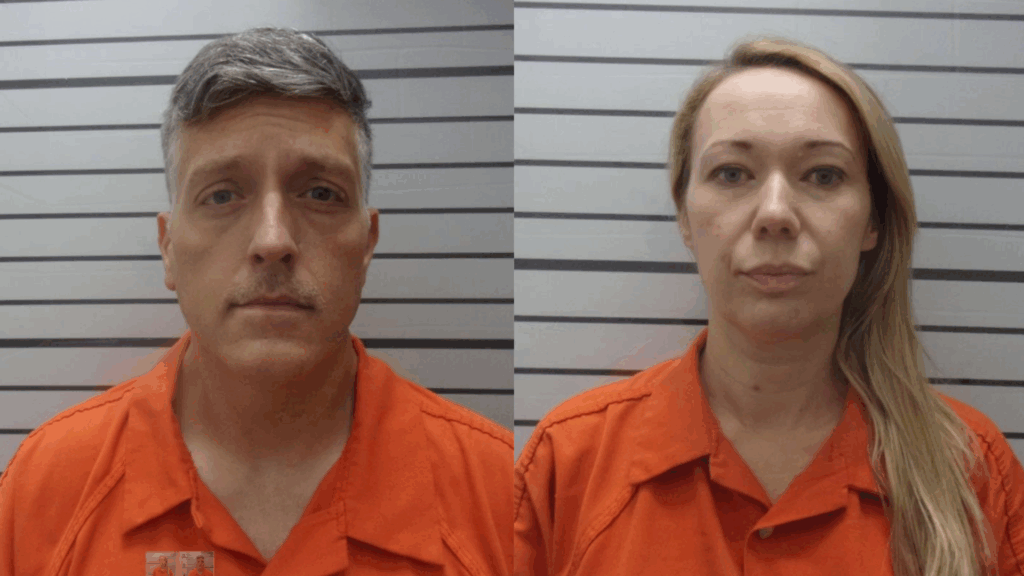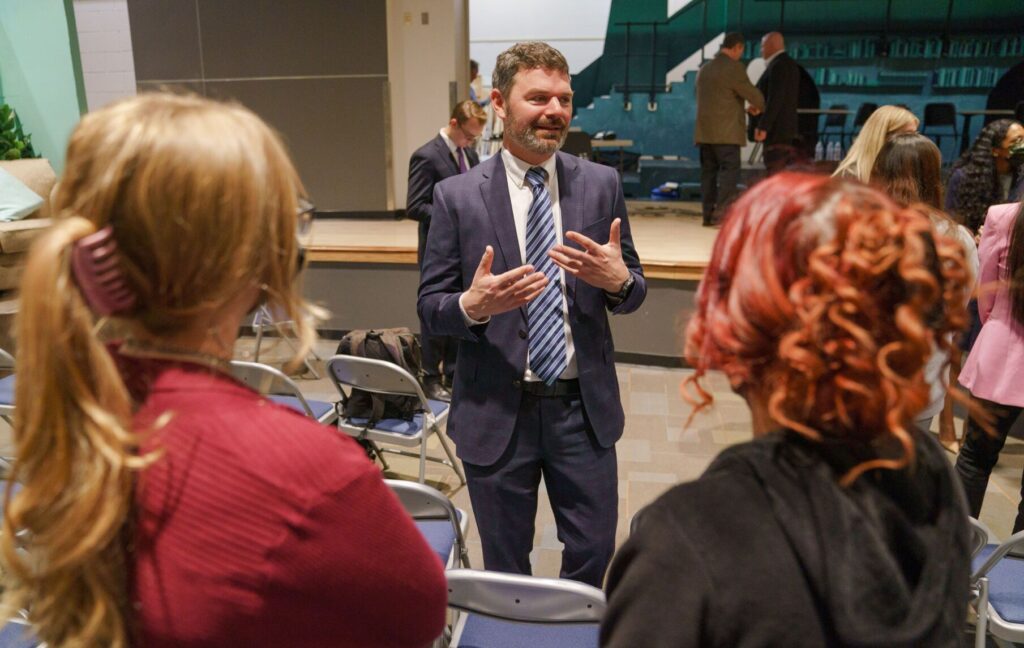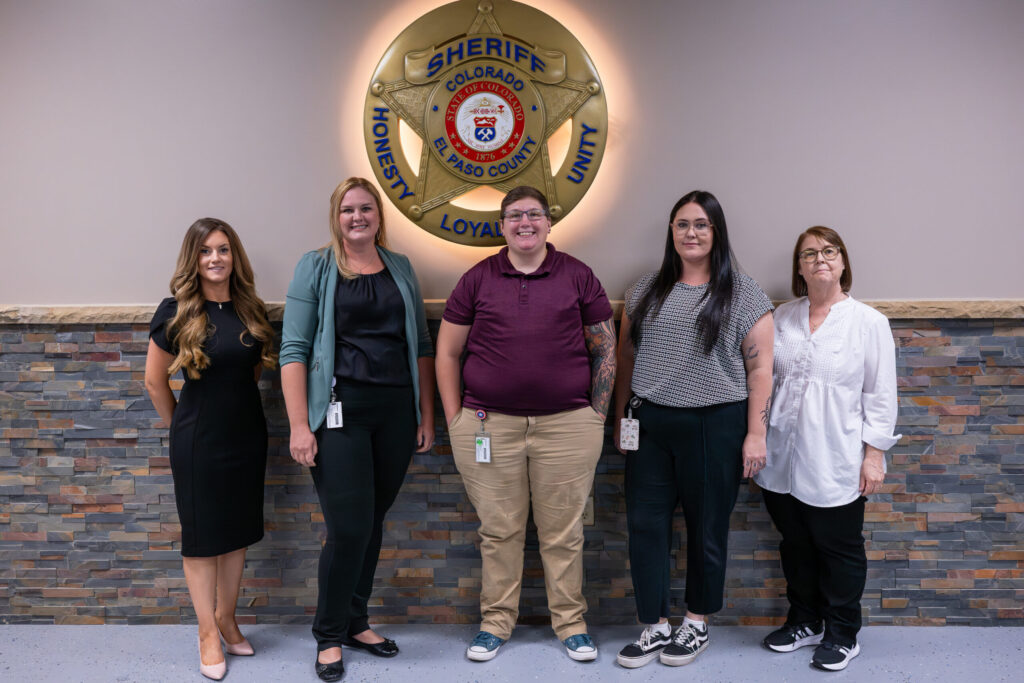VA issues still plague many veterans; department claims progress being made

Karl Lippard was a lanky and smooth-faced 17-year-old, 6 foot, 1 inch and 148 pounds of youthful self-assurance, when he joined the Marine Corps in 1962.
He left Vietnam on his 20th birthday, after 12 months of exposure to toxic chemicals his country had promised were safe, bearing open wounds and the scars of a ferocious battle you won’t find in the history books.
Lippard’s purview is vast, and it’s of an American institution he says only wears the veneer of commitment to service members’ long-term health and wellness.
After spending years fighting to get the Department of Veterans Affairs to acknowledge the combat injuries that ended his military career and still haunt him today — as well as reparations for his 610,000 fellow Vietnam veterans and a rethink of a department he believes has skewed tragically from its mission — the one consistent takeaway for Lippard is this:
Denial isn’t just wartime policy enacted in the name of national security.
Whatever your story, your battles, your physical or psychological needs after suffering in service to your country, if you want the full benefits guaranteed in your contract with your government, he said, be prepared to fight your government to get them.
“They will do everything they can not to have to pay for your care. Throw all this paperwork at you, doubt you and question your service … after you put your life on the line,” said Lippard, 74. “The system, it’s torture. They actually torture you, in every way they can, and at every point.”
Lippard is far from the only veteran with complaints about the nation’s fifth largest federal agency, whose budget request for 2021 is more than $240 billion.
Despite years of overlaying promises, investigations and overhauls — and as legislators and leaders tout improved numbers and a new dawn in expanded, patient-centered care — generations of Colorado veterans still say they’re having to fight for the coverage they need and were promised.
For some veterans, such as Lippard, those challenges include fights over arbitrary-seeming disability ratings and denials that date back decades.
An Iraq War veteran who called in to an August teletown hall with the Department of Veterans Affairs’ Under Secretary for Benefits, Paul R. Lawrence, talked about a claim he filed in 2009 that was denied more than seven times before the status finally was changed to “full and permanent disability.” After each denial, the VA closed the claim to avoid having to issue back pay.
“We want our veterans to know that VA is truly changing,” Lawrence told the virtual audience of American Legionnaires. “We are far from perfect, but we are better today than we were just a few years ago.”
In spite of a recently relaunched and expanded federal program under the Mission Act, held up by President Donald Trump as a signature policy, other veterans say they’re still facing lengthy waits and frustrations getting in to see VA providers, as well as roadblocks when they try to use VA benefits in the community — at doctors’ offices, urgent care centers, pharmacies and, sometimes, with counselors and therapists they’d been seeing for years.
Still more vets, though, probably say nothing at all.
“The process is hard for those of us who are trained to deal with the system, and do it for a living,” said Colorado Springs attorney Jenna Lopes, who specializes in helping clients appeal decisions by agencies such as the Social Security Administration and VA. “Whatever it is they’re trying to achieve, for a layman, especially if they’re suffering from depression, anxiety, PTSD … it’s overwhelming. Not everyone’s going to call a lawyer or their congressman. So many people just give up.”
‘Vet Choice’ didn’t work
Critical gaps in the Department of Veterans Affairs, the “most comprehensive system of assistance for veterans of any nation in the world,” were exposed in the years after the 9/11 attacks when service members began returning from the wars in Iraq and Afghanistan, the longest continuous military engagement in America’s history.
Simply put, there weren’t enough providers in house to meet demand, especially when it came to mental health and substance abuse treatment. Veterans were forced to wait weeks and sometimes months for appointments, or make long drives to out-of-town facilities where a doctor could fit them in.
By 2014, internal audits of the VA showed that more than 57,000 veterans waited at least 90 days to see a doctor and another 63,000 sought, but never received, an initial appointment. In the Phoenix VHA system, at least 40 veterans died while waiting for care.
The revelations underscored a national crisis among veterans and led to widespread calls for reform.
The Obama administration’s Veterans Access, Choice and Accountability Act, or Vet Choice, was meant to provide the fix. Enacted in late 2014, it marked a major evolution in health care access for veterans, who for the first time could see a provider in the community, on the VA’s dime, if their local facility couldn’t get them a timely appointment.
“If they allow it to work, what the Choice Act will do is stimulate some kind of competition where the VA will have to treat the veterans as actual patients rather than numbers,” said then-U.S. Rep. and current Aurora Mayor Mike Coffman, in a 2018 interview with The Gazette.
Vet Choice never got to the chance to truly work, though. Especially not in Colorado.
‘We fell for it. Again.’
The Centennial State’s rocky history with the VA started before Vet Choice. The VA’s Eastern Colorado Health Care System, based in Aurora, has been under scrutiny for years, due largely to multimillion dollar cost overruns at its Rocky Mountain Medical Center, a 1.2-million-square-foot, state-of-the-art facility on a 31-acre campus.
When the facility finally opened in summer 2018 — five years late and more than $1 billion over budget — it was the most expensive built. Federal investigators blamed VA executives for the lavish and confusing design, as well as a lack of oversight or understanding of the boondoggle as it progressed.
In Colorado Springs, home to one of the nation’s largest concentration of veterans, problems of a different sort surfaced at the new PFC Floyd K. Lindstrom outpatient clinic soon after it opened in late 2014.
As of March 2017, more than two years after the start of the Vet Choice program, one veteran in five at Lindstrom was still waiting a month or more for VA care, and many who qualified for the community health care program weren’t getting the referrals they needed to access it, according to a VA report. An investigation also found that clinic staff had altered scheduling records so some patients’ appointment wait times looked much shorter than they actually were.
On the heels of that, came revelations of gross mismanagement by the contractors in the Western Region tapped to process VA payments to civilian providers, Health Net Federal Services and TriWest Healthcare Alliance. The companies became the target of a federal grand jury investigation after a 2017 audit by the VA’s internal watchdog found they’d collected an estimated $39 million more than they should have, much of it from bills that were paid by VA but not distributed to providers.
Colorado Springs therapist Michael Sunich was one of many owed thousands of dollars in back pay by Health Net. At one point in 2018, the rolling unpaid debt reached almost $30,000, threatening the future of his practice, Gone West Consulting and Psychological Services, and — more importantly — the welfare of emotionally vulnerable patients he refused to abandon, reimbursement or no reimbursement.
“A lot of these guys have pretty serious PTSD issues, and I’ve been working with them for years in some cases. I can’t just show them the door because I didn’t get reimbursed,” said Sunich, who chose to stick it out despite a mass exodus of community providers.
He said he had hoped the changeover to the Mission Act’s Community Care Network model would be the revolution it was billed to be, but almost four months in he’s locked in a scenario that’s sadly, frustratingly, familiar: unpaid bills, interminable paperwork snarls and bureaucratic dead ends that almost seem created to discourage and stymie follow-through.
“We’re just sitting here, shaking our heads, wondering how could they have done this again,” said Sunich, who estimates he is owed about $20,000 from the VA for counseling services provided to veterans primarily in 2020, but dating back to 2018. “They just deny, deny, deny, and hope you’ll go away. Then they say they’re not going to pay anything retroactively. They’ve created this scenario that’s maddening and impossible, and we fell for it. Again.”
The company chosen by the VA to administer the Community Care Network in the Western Region? TriWest Healthcare Alliance.
Mission Act slow to unspool
The rollout of the Mission Act started last year, with the Community Care Network set to launch in the Western Region in April 2020.
Even after a postponement to June, that transition couldn’t have happened at a worse time: the middle of a pandemic. What ensued was an effective “total shutdown” and several months during which referrals for care in Colorado came to a virtual standstill, said one VA employee, who spoke with The Gazette in mid-July.
More than a month after the Mission Act’s new system for VA care in the community went into effect, many of Colorado’s largest civilian providers had jumped through the hoops, but still didn’t have active contracts in the new network. That meant patients couldn’t be referred to them, and led to a “massive provider shortage,” said the VA employee.
In mid-July, there were “no intensive outpatient providers in the Denver area at all” accepting referrals from the VA, said the employee, who spoke on the condition of anonymity.
The effects, though, were felt statewide.
“I have a veteran who is 75 years old, and you want me to tell him to drive from Alamosa to Walsenburg because our network changed?” said the employee. “I will say, if we follow the guidelines (of the Mission Act) it is … better than the previous Choice program. But right now, we are not following the guidelines and completely negating a law that was set forth.”
By late September, the employee said that the situation had improved from the “hot mess” it was over the summer, but in some regards only by comparison.
“Referrals are starting to go through slowly,” but only with some types of care, the employee said. For mental health and substance abuse treatment, “there’s still nowhere to send those people.”
System ‘beyond impossible’
Peer support specialist and Navy combat veteran David Conley can tell you where many of those people ended up, during what he says was an in-house provider shortage at the VA that began to worsen exponentially last year.
Conley used to tell people his job leading the VA’s weekly “Veteran X” Post Traumatic Stress Disorder support group at Mount Carmel Veterans Service Center in the Springs was his chance for a “do over” after the dark times that followed his separation from the military in 1989. It’s where he bonded with his brother and sister veterans, plumbed his soul to share details about the trauma he’d survived and seen in service, as well as the addiction and prison that resulted from self-medicating his PTSD and bipolar disorder after he got out. Leading the group also taught him more about navigating a system that often seemed “beyond impossible” than four years working for the VA, or almost 30 years of being a veteran.
The work he loved, though, was what brought him down.
“They couldn’t get folks in for an appointment with a licensed therapist, so while they waited they’d get them in right away to the group,” said Conley, 55. “I was getting five or more referrals a day from veterans that were undiagnosed, and as a peer, I have a mental health disorder, too. It broke me.”
Last November, after facing “issues of suicide” both professionally and in his family, Conley said he was forced to leave the job and applied for an increased disability rating because he was unable to work. After lumbar fusion surgery in February to correct damage stemming from his time in the military, Conley said the VA reassessed his diagnosis of PTSD and bipolar disorder, and changed it to substance abuse and depression.
“I’ve been clean for 15 years, and the VA knows it,” said Conley, who also struggled to get a mental health appointment through the VA when he first felt himself entering crisis mode. “I put myself back together piece by piece, and they didn’t care. They just ripped me back apart. That’s the thanks I get.”
Conley is working with Springs attorney Lopes to get the diagnosis changed back, to one that doesn’t limit his coverage, or make him doubt the truths that allowed him to get back on his feet.
“With Dave’s job, what he did, he had to be a veteran … and they knew he had PTSD,” Lopes said. “The VA is a bureaucracy, but what happened to treating people decently? This is such a disservice to our veterans.”
Lamborn: Some strides made
Of course, how the VA is doing — in general and under the Mission Act — depends on who you ask, and where and when you look.
Data on the department’s website indicates encouraging trends regarding scheduling, nationally and in Colorado, where the average wait time for a mental health appointment in the VA Eastern Colorado Health Care System was reported as being less than five days. The Eastern Region, which encompasses Denver, Aurora and the Springs, was recognized by the VA and its “Veterans Experience Office” as the nation’s most improved for inpatient experience in the 2019 fiscal year.
But, even as it sends patients to private sector care, VA is still struggling with wait times for thousands at its Aurora hospital and Springs clinic. About 10% wait more than a month for care and hundreds have wait times of three months or more, VA data shows. That’s much better than it was three years ago, but still exceeds targets VA has aimed to hit since the Obama administration.
“The VA needs to be constantly improving itself. It’s made some strides in recent years,” said Colorado Springs U.S. Rep. Doug Lamborn, adding that expansions under the Mission Act were “a big step in giving more flexibility to veterans and better care.”
He recognizes there’s more to be done, though.
“I know that there are still frustrations, still a lot of red tape. The COVID pandemic hasn’t made things easier,” he said.
The head of the VA Community Care Network for Colorado’s Eastern Region, Dr. Katie Beckett, said she knows the changeover came with challenges, but was not aware of a shutdown in referrals over the summer.
“Any time there’s a change, the process can always be improved. And we’re striving to improve that process every day,” said Beckett, whose office is based in Denver.
Beckett has a staff of nearly 100 people who process requests for community care once a veteran is determined to be eligible — generally speaking, because they’re facing waits of 20 days or more or drives of at least 30 minutes to get in with a provider at the VA. Once veterans are in the system, the community care liaisons make sure the paperwork is done right and gets where it needs to be so the provider gets paid. In addition to “preauthorization care,” since June, they’re also handling scheduling, which simplifies the process and leads to “direct contact and better customer service,” Beckett said.
The Community Care Network includes over 17,000 providers in Colorado and expands upon Vet Choice benefits to offer integrated health options such as yoga, massage and biofeedback.
Beckett pointed out that VA facilities also have broadened their services to include therapies such as acupuncture.
“The goal, always, is to deliver the right care at the right time in the right place for our veterans. What I love about the Mission Act is it does provide that. It increases the eligibility for veterans to be seen in the community if they choose to,” Beckett said. “Of course, as a system we’d like for them to use VA as much as possible, but … we’re all here to take care of our veterans. That’s our goal.”
Choices still limited
The Mission Act might have opened up new options in the community, but if the VA can get a veteran in with a provider who meets their needs, community care could be off the table.
“The Mission Act expanded the eligibility for care in the community. Some is drive time, some is wait time, sometimes it’s your best medical interests, depending on your provider determining it’s best for you to get your care in the community,” Beckett said.
That’s where things can get murky. Whether a veteran who’s been receiving care in the community can continue to do so, if the VA is able to get them an appointment in house, really depends on who handles their request and whether the veteran can make a good enough argument to support their case.
Lana Rodriguez thinks they shouldn’t have to.
The account manager at Ponderosa Medical Billing Service in Colorado Springs was on the job during Vet Choice, so she’s got perspective. These days she’s spending less time on the phone sorting out and dealing with claims status, and is happy to report an average callback of just 30 minutes, versus half a day or longer on hold. The turnaround time on payments also has increased for the company’s clients, with reimbursements usually arriving within 30 to 60 days.
The issue now, she said, is getting authorization for veterans who want to continue seeing longtime mental health providers in the Colorado Springs community.
“Community providers are having a really hard time getting their authorizations approved at the local level. The VA is trying to keep them (patients) in house,” Rodriguez said.
Between fiscal year 2017 and 2019, the Floyd K. Lindstrom clinic saw a 12% increase in patient encounters and clinic visits increased 6%. It’s increased staff, with two additional psychologists and a social worker scheduled to start this month. The push makes sense, but can put extra stress on veterans and leave community therapists in a financially, and ethically, compromising position.
“Providers understand they don’t have that authorization, that the VA is rejecting it. But at the same time, they feel like they need to treat this patient, because they know the outcome if they don’t,” said Rodriguez, who now spends hours on the phone with Lindstrom, most of it on hold, trying to get the veterans’ authorizations changed. Because, “How do you tell a patient, ‘I’m sorry, I’ve been seeing you for two years, but I can no longer treat you?’”
It can take multiple sessions for a patient to establish a rapport with a therapist, enough so that they feel comfortable opening up about past trauma, said Army veteran Stacey DeMoss. In the fragile ecosystem of PTSD, an abrupt break in that relationship could represent a final straw for a vet who’s on the edge.
“As soon as you open that door, it’s wide open. And then you pull that care, you pull that veteran away from that therapist, you’re setting them up to fail,” she said.
‘Divide and conquer’
In the Springs, Sunich said he and many of his patients are still actively dealing with the fallout, stress and confusion of what he hopes are temporary speed bumps.
He said he knows at least one veteran who’d been in therapy for PTSD, who chose to leave after receiving a bill for services that should have been covered under community care.
“They’ve got enough to deal with, without having collections hanging over their head,” Sunich said.
Despite his 100% disability rating, another of his patients said he was forced to abandon his VA coverage and turn to Medicaid to get the mental health treatment he needed, but also to avoid scenarios that were making things worse.
“Every interaction with the VA pushes me one step closer to giving up,” said the veteran.
“This is supposed to be the one thing you can rely on, that America will take care of its veterans,” DeMoss said. “Then it’s like they take advantage of you as soon as you let down your guard. We need to let down our guard and trust, because how else do you heal?”
For Vietnam veteran Karl Lippard, who was wounded seven times in combat, part of his healing is taking his fight with the VA as far as he can.
And if you know Lippard, you know that means as far as it needs to go.
He believes a fix to the long-term and lingering problems will require more than a policy update.
“The VA will divide and conquer. They will put so much stress on the person they won’t return, and that’s their goal,” said Lippard, now a renowned gun designer whose companies handle multimillion-dollar government, civilian and international firearms contracts. “The VA doesn’t pay its bills. They don’t treat veterans with respect. I believe the PTSD we’re experiencing in preponderance today is largely aggravated by the VA and their actions. What we need to do is get rid of the VA.”













